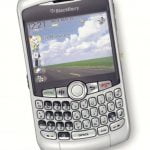The latest flagship from South Korean tech giant Samsung has been a fan favourite since its launch earlier in April 2017. The Galaxy S8 is here: easy on the eye, and packing powerful hardware under the hood, the smartphone is an enthusiast’s dream. Its success is of great significance to Samsung as it will help the company answer uncomfortable questions over its position as a market leader after the Note 7 fiasco.
From the looks of it, the tech giant has left the battery woes of its previous flagship behind as numbers reveal the Galaxy S8 to have hit one million sales twice as quickly as its predecessors. The numbers hint at how swiftly the company recovered from last year’s costly smartphone recall.
This recovery is a result of not a refreshed, but a reimagined smartphone from Samsung. However, as is the case with the market, no single phone gets the top spot for too long.
There’s always a new challenger around the corner, waiting not so patiently to dethrone the newly crowned market leader. For Samsung’s S8, that challenger is HTC’s comeback phone, the U11.
With its latest flagship, the company has introduced a product that stands out from the competition and if HTC is to be believed, much like the introduction of the capacitive touchscreen, the U11 — with its squeezable frame — has the potential to change the way we use smartphones.
But are such claims far-fetched? Or is the U11, with its nifty new features, a true challenger to the Galaxy S8’s throne? Let’s find out.
About the design
Samsung’s Galaxy S8’s reimagined design helps it rank high when it comes to the appearance. The phone takes elements from the Galaxy S7 and carries them forward to bring to the customers arguably what is the most beautifully-designed phone in the market. The phone’s use of metal and glass, which seamlessly melt into each other, further add to the elegant frame.
The U11 draws heavily from previous phones in the HTC family. Its design scheme closely resembles the HTC U Ultra and Play announced earlier in 2017. Much like the S8, it also uses glass at the front and the back, but what sets it apart is its use of glass to create brilliant colours on the back of the phone.
Both the phones have chosen slightly differing approaches when it comes to design, but for us, the S8’s more elegant use of a metal frame sandwiched between glass trumps U11’s more glossy “liquid surface” design.
 Samsung Galaxy S8 [Photo: India Today]
Samsung Galaxy S8 [Photo: India Today]
Display
The Galaxy S8 again wins the race when it comes to the display. Not only does the phone have a bigger display in terms of size, but also pumps out more pixels as compared to the U11. The S8 comes to the table with a 5.8-inch 570 ppi display, working at 2960×1440 resolution. The U11, on the other hand, underwhelms with a smaller 5.5 inch 2560x 1440 Quad HD display capable of producing 534 ppi.
Camera
The latest flagship from the Taiwanese phone maker comes with a 12-megapixel single-lens rear camera setup with the company’s proprietary UltraPixel 3 and UltraSpeed Autofocus technologies. It uses a bright f/1.7 aperture lens and comes with a 1/2.55-inch sensor that promises great low-light performance.
Popular benchmarking portal DxOMark has given the phone’s camera an overall DxOMark mobile score of 90 — that makes the HTC U11 the highest-rated smartphone camera it has ever tested.
The latest and greatest from Samsung, the S8 also features a single-lens camera setup with a 12-Megapixel camera at the back. The aperture on the camera is rated at F1.7 and it boasts of autofocus and optical image stabilisation. Software optimisations coupled with the above-par hardware enable the S8+ to click crisp pictures with brilliant colour reproduction.
As DxO explains in its benchmark result of the S8, the phone owing its excellent still photography performance in all lighting conditions achieves a photo sub-score of 88 points — only two shy of the HTC U11.

[Source”pcworld”]










